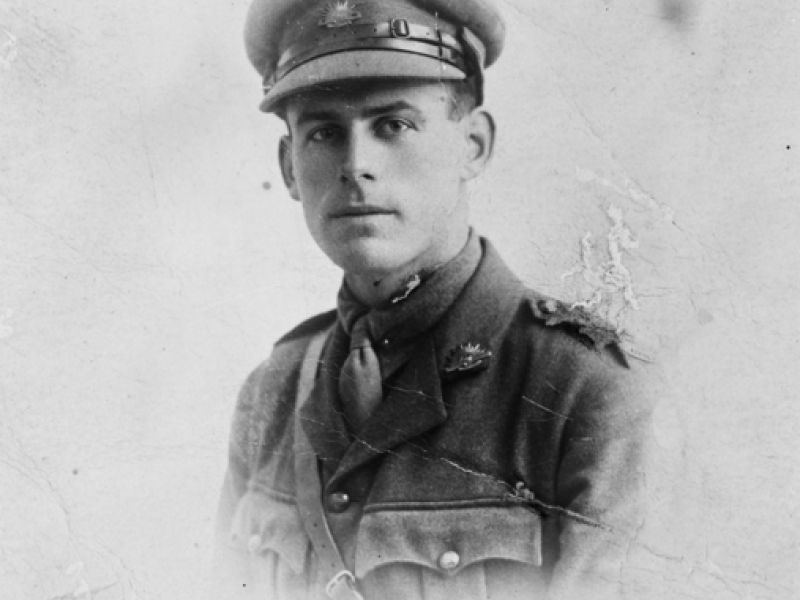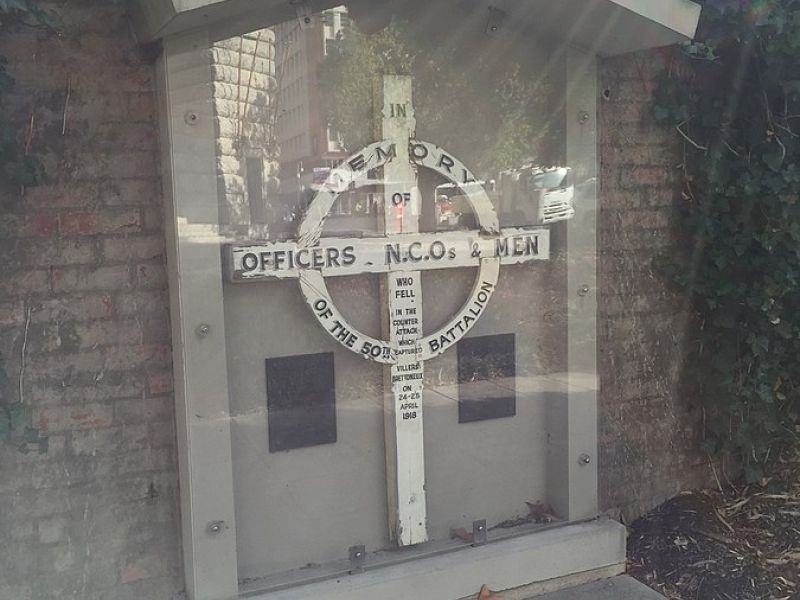Lieutenant Ralph Elsmere Claridge
223 Lieutenant Ralph Elsmere Claridge, 50th Battalion, AIF, First World War.
Ralph Claridge was born in Auburn, South Australia, on 11 July 1892, the only child born to John and Serena Claridge.
The family moved to Port Pirie in 1899 but by 1902 the Claridges had moved to East Adelaide. That year, Serena, who had been suffering with pneumonia, died at home, leaving John to raise their son.
Claridge attended Marryatville Public School and then Prince Alfred College. While studying at college, he was a member of the senior cadets. He went on to study at the School of Mines, where he studied wool classing.
While in Adelaide he met Hilda Giles of Unley. They began a relationship, and became engaged.
In 1913, Claridge moved with his father to Hectorville where they started a poultry farm they called Brackley.
On 19 August 1914, soon after the outbreak of the First World War, Claridge enlisted, joining the 10th Battalion which was being raised at the Morphettville Racecourse.
After a brief period of training, Claridge embarked with the 10th Battalion from Outer Harbour, Adelaide, on 20 October 1914 aboard the transport ship Ascanius. Initially destined for England, the first AIF convoy was directed to stop in Egypt instead. Further training in the desert followed before Australian troops were committed to the planned campaign at Gallipoli.
The 10th Battalion left Egypt at the beginning of March 1915 and sailed for Lemnos. Claridge was amongst the first wave of troops ashore at Gallipoli in the pre-dawn hours of the 25th of April.
After enduring the initial burst of fighting, he was wounded in the right arm on the 19th of May during the Ottoman counter attack which had aimed to drive the Australians and New Zealanders back into the sea.
He was evacuated back to Egypt to recover, but returned at the end of July and was promoted lance corporal in September. Claridge’s Gallipoli campaign came to an end in November when the 10th Battalion was withdrawn for a well-earned rest.
After returning to Egypt in January 1916, Claridge was promoted to corporal at the end of the month. In February, with the AIF expanding in Egypt to four divisions, Claridge was transferred to the 50th Battalion. Early the following month he was promoted to sergeant.
The 50th Battalion left Egypt for France in June and was engaged in its first major battle at Pozieres in August. On 16 August, Claridge was wounded in the right arm for the second time. Though the wound was listed as “mild” it still required his evacuation to England.
He was taken to the 3rd London General Hospital at Wandsworth and while recuperating had his portrait painted by Melbourne artist George Coates. The painting was displayed in Royal Hall as part of an exhibition in 1917 and it was featured in the exhibition book.
In late March Eldridge was posted to the short-lived 70th Battalion, part of the effort by Australia to raise a sixth infantry division. Less than a week later, he was sent to Tidworth to attend a School of Instruction for Officers. He passed the course with distinction and was commissioned with the rank of second lieutenant.
With the disbanding of the 6th Division, Claridge was posted back to the 50th Battalion. He returned to France in early February 1918 and re-joined the 50th Battalion at Spoilbank Camp in Belgium.
At the beginning of March Claridge was promoted to lieutenant. Later that month the Germans launched their Spring Offensive. The 50th Battalion was rushed south to help blunt the German advance at Dernancourt, and suffered heavy casualties doing so.
After failing to capture the town of Villers-Bretonneux in early April, the Germans succeeded in the early hours of 24 April and wasted no time in fortifying their newly won positions.
A counter-attack was organised for the following day, but was delayed until nightfall to minimise Australian casualties. At 10pm, the 50th Battalion began its advance south of Villers-Bretonneux. As the advance continued, German artillery and machine-gun fire inflicted heavy casualties.
Lieutenant Claridge was killed by machine-gun fire while leading his men in an advance during the early hours of 25 April. He was 25 years old.
Villers-Bretonneux was secured two days later, but the price paid for its capture was steep. The 50th Battalion had suffered 261 casualties.
Claridge’s remains were unable to be identified after the battle, and today his name is commemorated on the Australian National Memorial at Villers-Bretonneux.

 Australian War Memorial
Australian War Memorial